Impact of Window Configurations on Heating and Cooling Demands of Building in a Regional Climate—A Case Study †
Abstract
1. Introduction
2. Methodology
3. Results and Discussion
4. Conclusions
- WWR and orientation have a significant influence on the overall energy demands for heating and cooling in buildings under typical Karachi climatic conditions. It is found large openings increase the overall energy consumption of the building.
- The space cooling consumption is found considerably higher than the space heating consumption.
- The best orientation of the building in this specific region is North while the worst orientation is West in terms of energy consumption.
Author Contributions
Funding
Institutional Review Board Statement
Informed Consent Statement
Data Availability Statement
Conflicts of Interest
References
- Architecture 2030. (n.d.) The 2030 Challenge. Available online: https://architecture2030.org/2030_challenges/2030-challenge/ (accessed on 7 April 2022).
- Djamel, Z.; Noureddine, Z. The Impact of Window Configuration on the Overall Building Energy Consumption under Specific Climate Conditions. Energy Procedia 2017, 115, 162–172. [Google Scholar] [CrossRef]
- Halder, V. Upgrading a Broad Area Illuminating Integrating Sphere and Solar Transmittance Measurement of a Sheer Blind. Master’s Thesis, University of Waterloo, Waterloo, ON, Canada, 2008. [Google Scholar]
- Koeigsberger, O.H. Manual of Tropical Housing and Building: Part One: Climatic Design; Longman: London, UK, 1973. [Google Scholar]
- Ryghaug, M.; Sorensen, K.H. How energy efficiency fails in the building industry. Energy Policy 2009, 37, 984–991. [Google Scholar] [CrossRef]
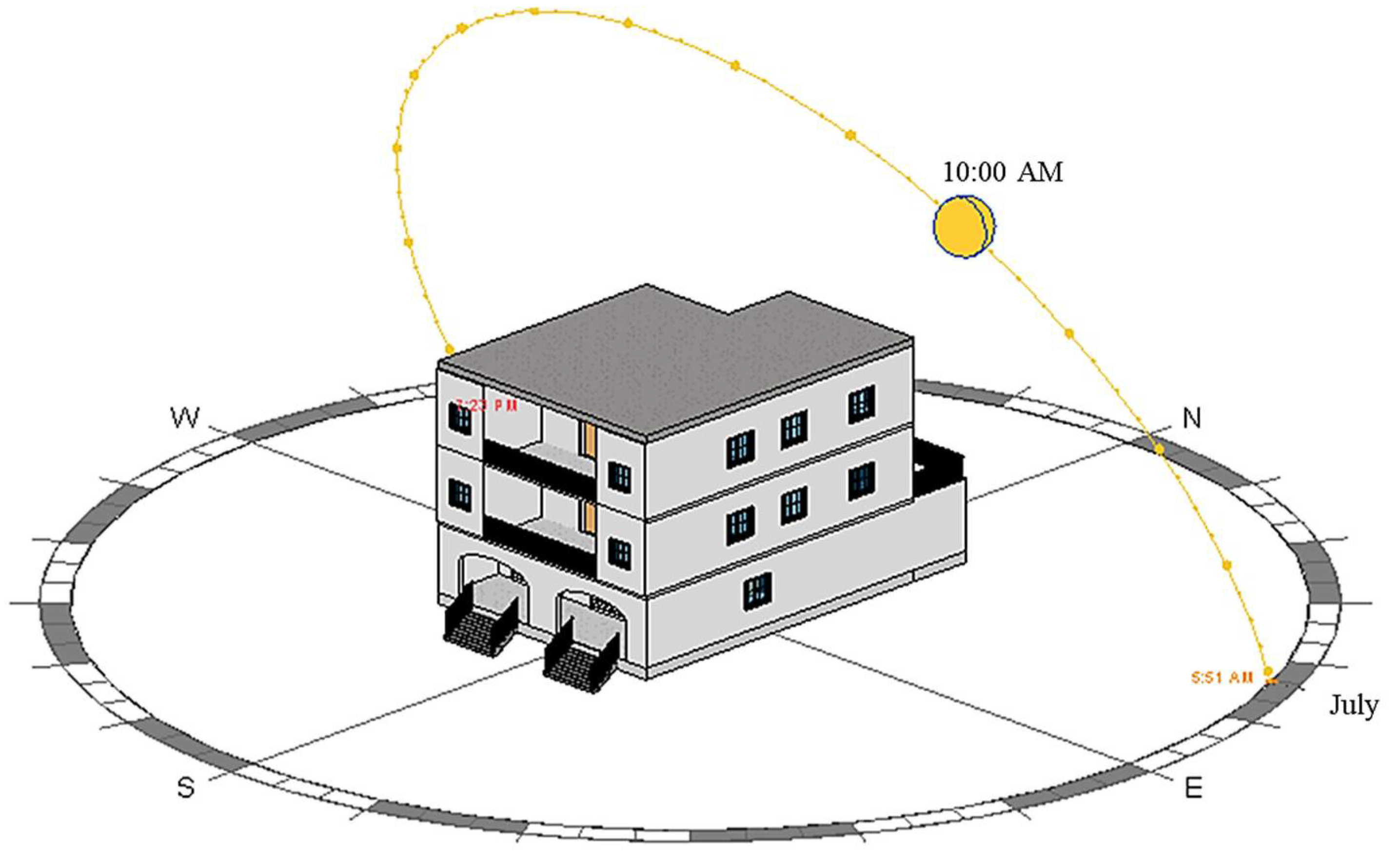
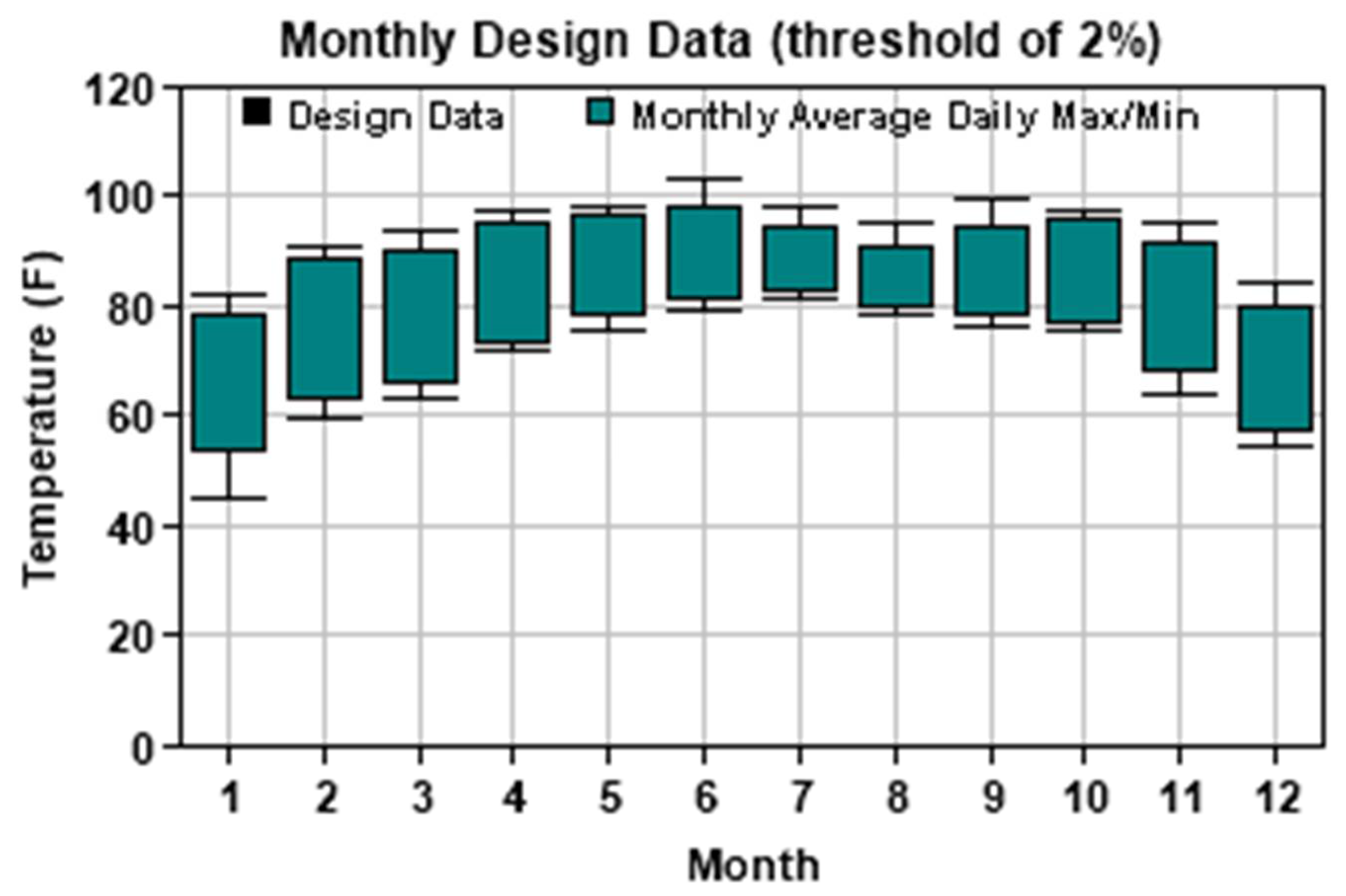
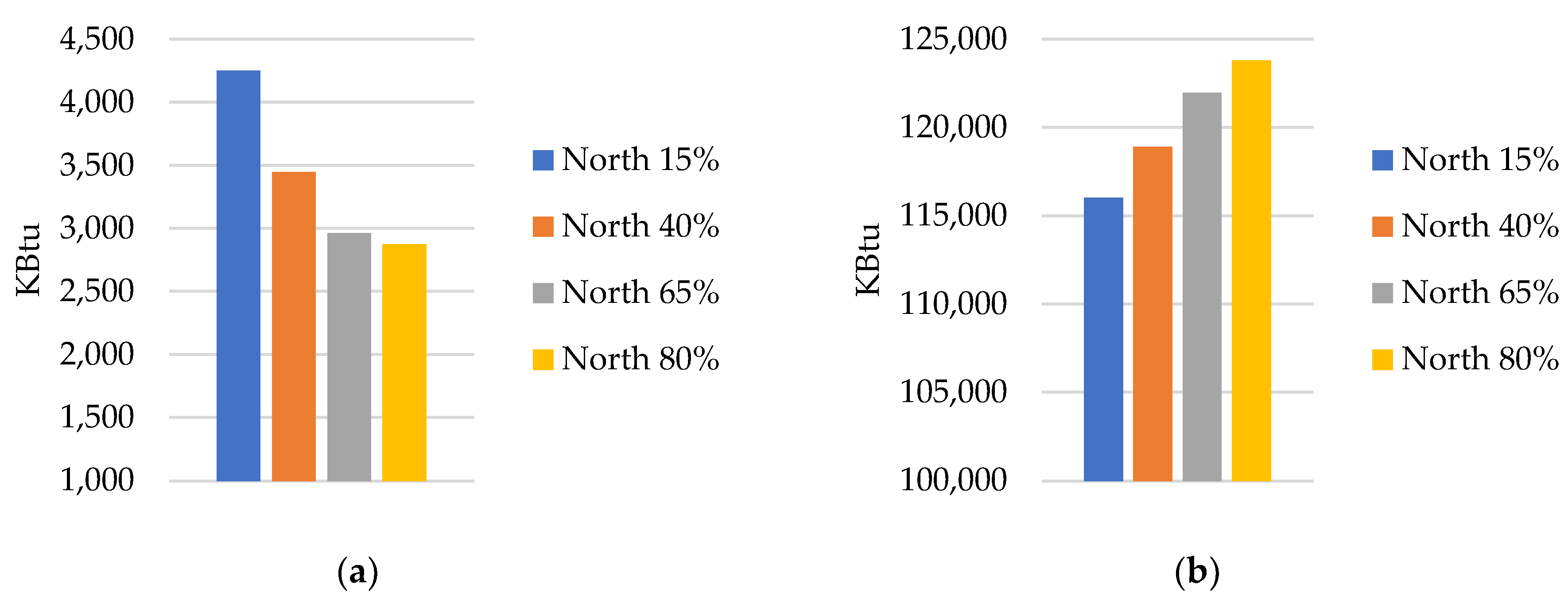
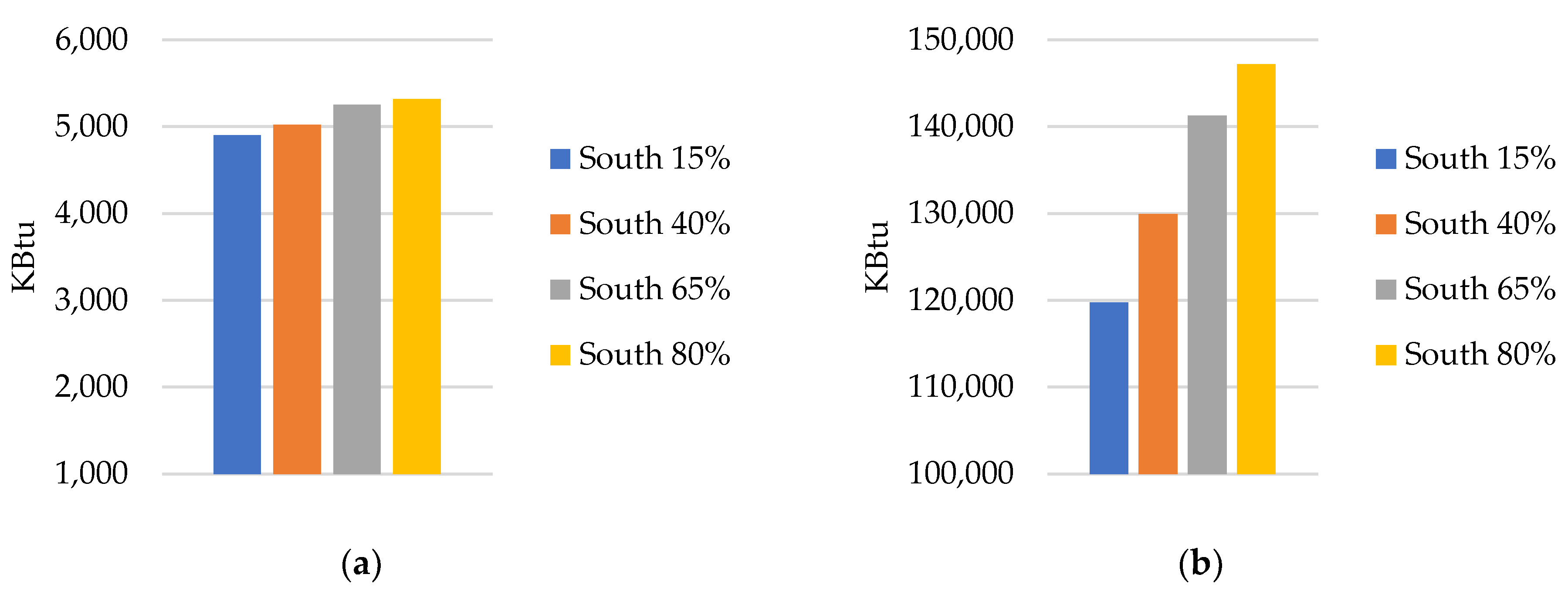
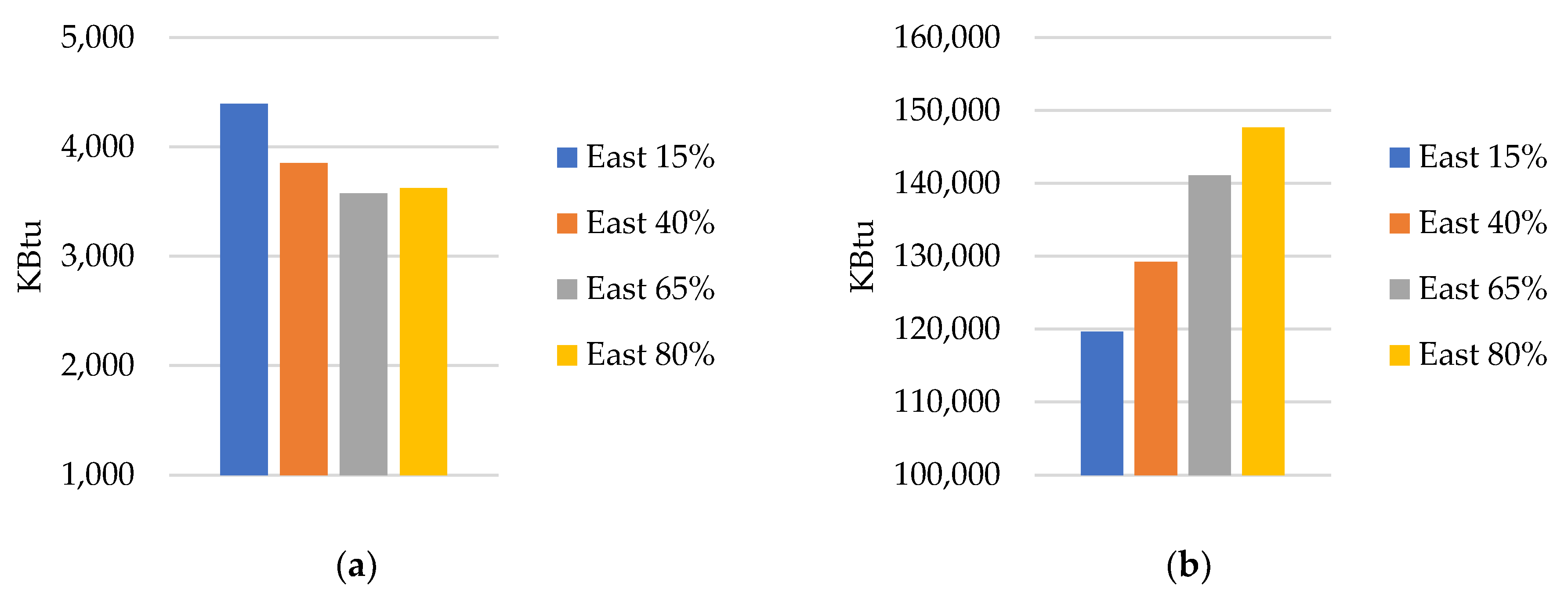
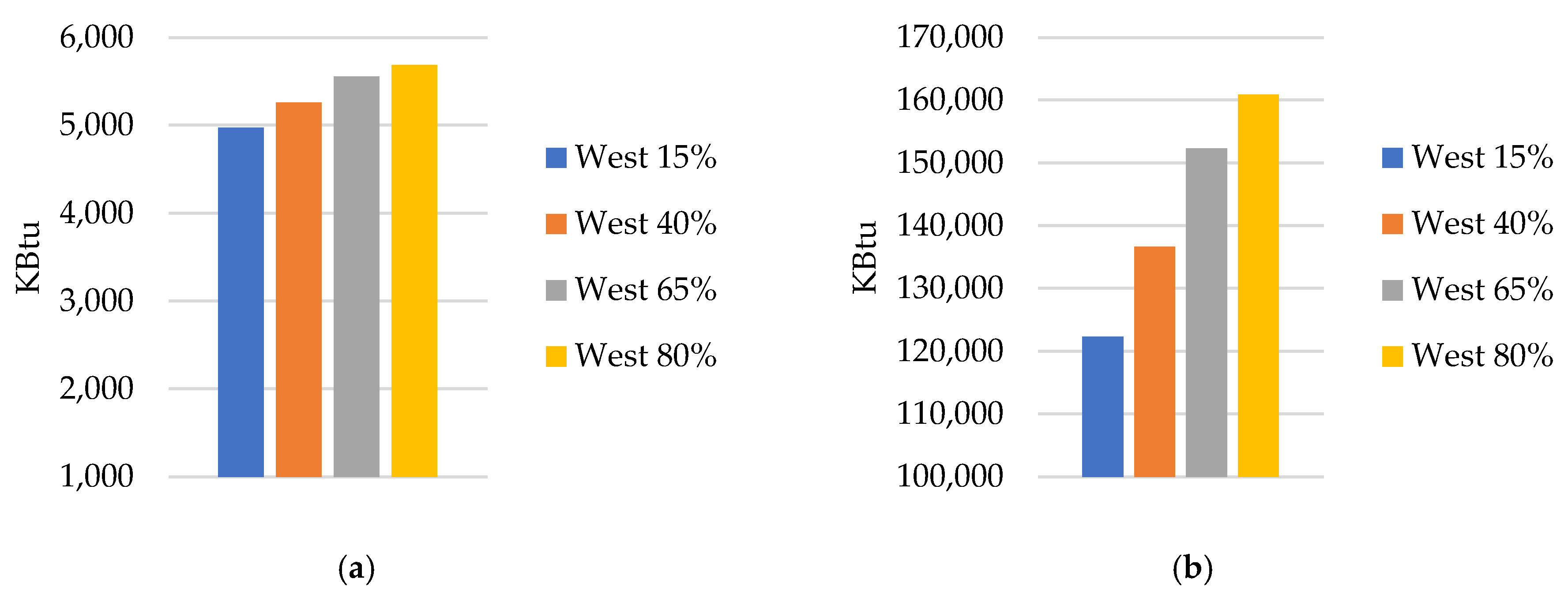

| Design Alternatives | North | South | East | West |
|---|---|---|---|---|
| N15 | 15% | - | - | - |
| S15 | - | 15% | - | - |
| E15 | - | - | 15% | - |
| W15 | - | - | - | 15% |
| N40 | 40% | - | - | - |
| S40 | - | 40% | - | - |
| E40 | - | - | 40% | - |
| W40 | - | - | - | 40% |
| N65 | 65% | - | - | - |
| S65 | - | 65% | - | - |
| E65 | - | - | 65% | - |
| W65 | - | - | - | 65% |
| N80 | 80% | - | - | - |
| S80 | - | 80% | - | - |
| E80 | - | - | 80% | - |
| W80 | - | - | - | 80% |
| Design Alternatives | Heating Energy Consumption (KBtu) | Cooling Energy Consumption (KBtu) |
|---|---|---|
| N15 | 4251 | 116,010 |
| S15 | 4902 | 119,713 |
| E15 | 4393 | 119,631 |
| W15 | 4973 | 122,303 |
| N40 | 3445 | 118,898 |
| S40 | 5019 | 129,937 |
| E40 | 3853 | 129,195 |
| W40 | 5259 | 136,620 |
| N65 | 2962 | 121,954 |
| S65 | 5250 | 141,262 |
| E65 | 3573 | 141,059 |
| W65 | 5553 | 152,314 |
| N80 | 2875 | 123,787 |
| S80 | 5315 | 147,191 |
| E80 | 3624 | 147,655 |
| W80 | 5682 | 160,858 |
Publisher’s Note: MDPI stays neutral with regard to jurisdictional claims in published maps and institutional affiliations. |
© 2022 by the authors. Licensee MDPI, Basel, Switzerland. This article is an open access article distributed under the terms and conditions of the Creative Commons Attribution (CC BY) license (https://creativecommons.org/licenses/by/4.0/).
Share and Cite
Ifrahim, M.S.; Zafar, A. Impact of Window Configurations on Heating and Cooling Demands of Building in a Regional Climate—A Case Study. Eng. Proc. 2022, 22, 2. https://doi.org/10.3390/engproc2022022002
Ifrahim MS, Zafar A. Impact of Window Configurations on Heating and Cooling Demands of Building in a Regional Climate—A Case Study. Engineering Proceedings. 2022; 22(1):2. https://doi.org/10.3390/engproc2022022002
Chicago/Turabian StyleIfrahim, Muhammad Saad, and Ahsan Zafar. 2022. "Impact of Window Configurations on Heating and Cooling Demands of Building in a Regional Climate—A Case Study" Engineering Proceedings 22, no. 1: 2. https://doi.org/10.3390/engproc2022022002
APA StyleIfrahim, M. S., & Zafar, A. (2022). Impact of Window Configurations on Heating and Cooling Demands of Building in a Regional Climate—A Case Study. Engineering Proceedings, 22(1), 2. https://doi.org/10.3390/engproc2022022002






